- Introduction to the General Ayurveda Post
- Syllabus Overview: General Ayurveda Examination
- First Paper Syllabus
- First Paper Syllabus Details: Ayurveda and Basic Sciences
- Second Paper Syllabus
- Second Paper Syllabus Details : Clinical and Applied Ayurveda
- 1. Nidana Panchaka (Diagnostics in Ayurveda)
- 2. Kayachikitsa (General Medicine)
- 3. Shalya Tantra (Surgery)
- 4. Shalakya Tantra (ENT and Ophthalmology)
- 5. Balroga (Pediatrics)
- 6. Stri Roga and Prasuti Tantra (Gynecology and Obstetrics)
- 7. Panchakarma (Detoxification Therapies)
- 8. Preventive and Social Medicine
- Tips for Preparing the Ayurveda Exam
- FAQs
- Conclusion
Introduction to the General Ayurveda Post
Ayurveda, the ancient system of medicine, has gained global recognition for its holistic approach to health and wellness. In Nepal, the Lok Sewa Aayog (Public Service Commission) conducts examinations for General Ayurveda posts, which are highly competitive and prestigious. This article provides an in-depth guide to the syllabus for the First Paper and Second Paper of the General Ayurveda exam, helping aspirants prepare effectively.
Whether you’re a fresh graduate or a professional aiming to excel in this exam, understanding the syllabus is the first step toward success.
Syllabus Overview: General Ayurveda Examination
The General Ayurveda exam conducted by Lok Sewa Aayog is divided into two major sections: First Paper (Ayurveda and Basic Sciences) and Second Paper (Clinical and Applied Ayurveda). Each paper tests the candidate’s comprehensive knowledge of Ayurvedic principles, their practical application, and associated scientific disciplines.
First Paper Syllabus
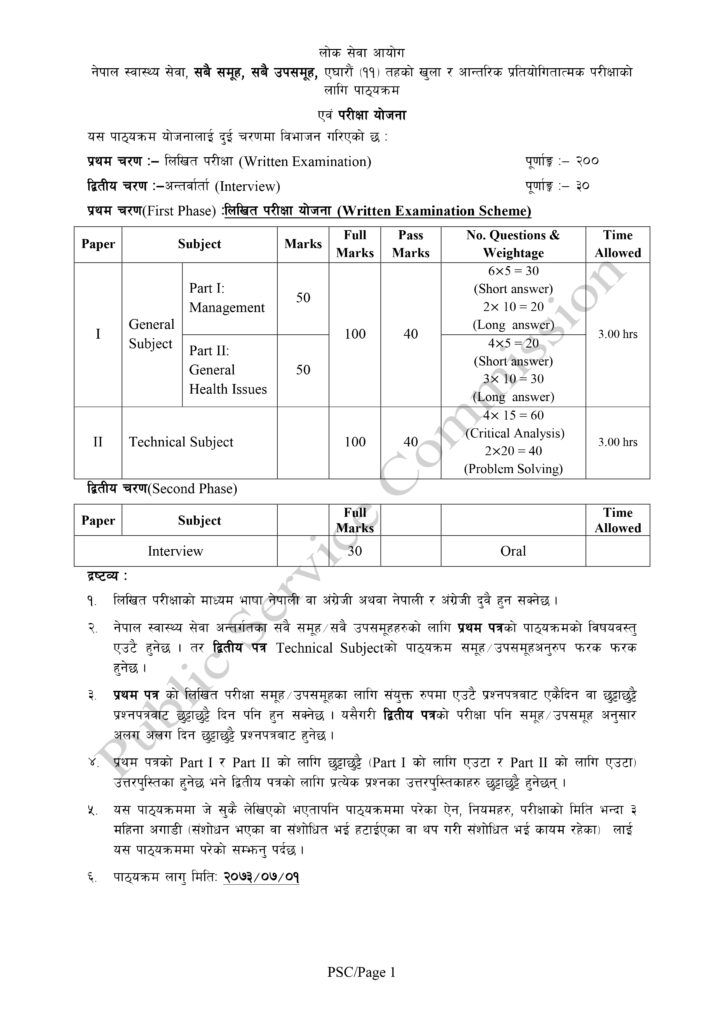
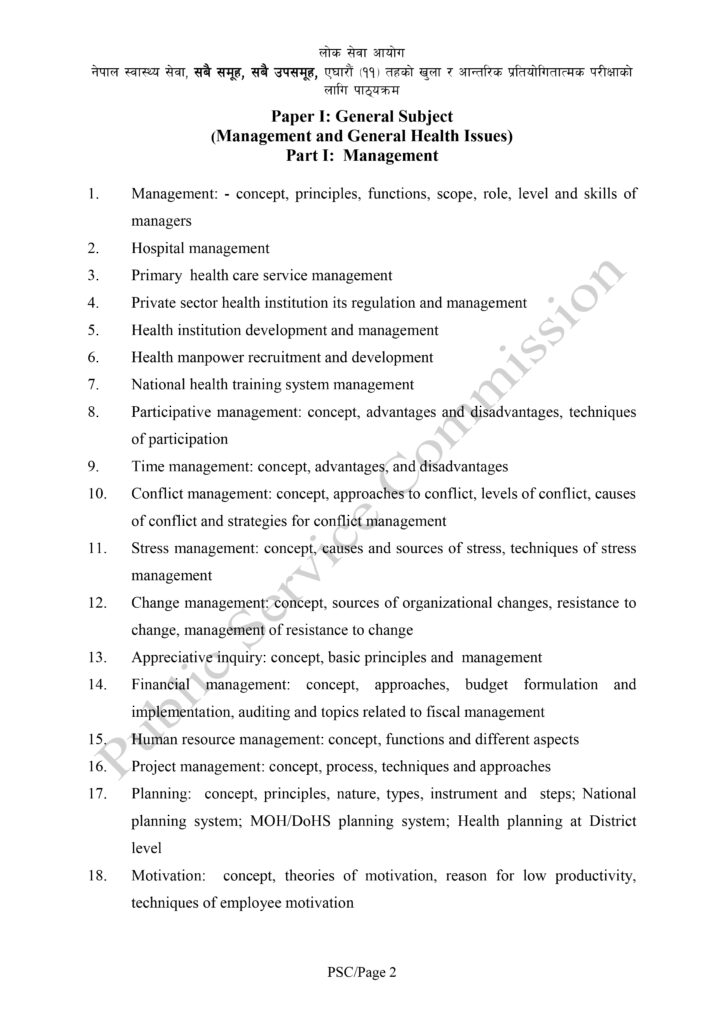
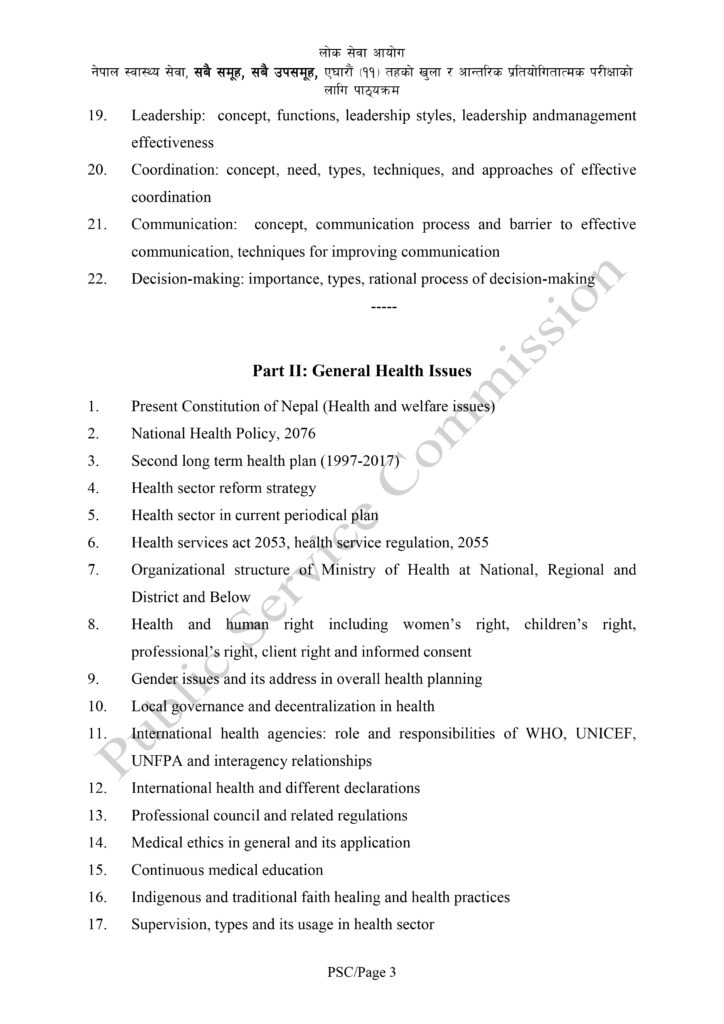
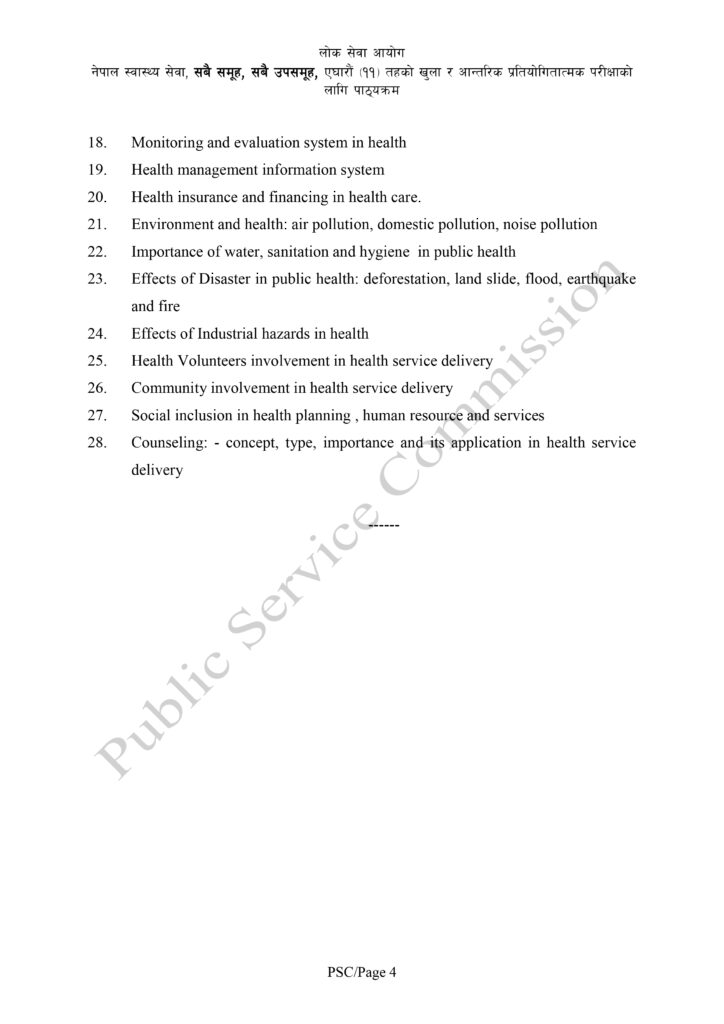
First Paper Syllabus Details: Ayurveda and Basic Sciences
The first paper is foundational, focusing on the theoretical and historical aspects of Ayurveda. It emphasizes traditional Ayurvedic concepts, including their modern relevance and integration with contemporary sciences.
1. History and Philosophy of Ayurveda
- Origin and evolution of Ayurveda
- Philosophical basis of Ayurveda (Samkhya, Nyaya, and Vaisheshika schools)
- Charaka Samhita, Sushruta Samhita, and Ashtanga Hridaya – Key contributions
- Prominent scholars and their roles in Ayurvedic development
2. Basic Principles of Ayurveda
- Panchamahabhuta (Five Elements): Earth, water, fire, air, and ether and their role in the body.
- Tridosha (Three Humors): Vata, Pitta, and Kapha – Their characteristics, functions, and imbalance effects.
- Sapta Dhatus (Seven Body Tissues): Rasa, Rakta, Mamsa, Meda, Asthi, Majja, and Shukra – Functions and disorders.
- Ojas and Agni: Importance of immunity and metabolic fire.
- Prakriti (Constitutional Types): Classification of individuals based on doshas.
3. Anatomy and Physiology (Sharira Rachana and Sharira Kriya)
- Ayurvedic view of body structure (Sharira Rachana)
- Physiology of doshas, dhatus, and malas (waste products)
- Concept of srotas (body channels) and their functions
- Understanding of marma points (vital areas)
4. Dravyaguna Vijnana (Pharmacology in Ayurveda)
- Classification of herbs based on rasa (taste), guna (properties), veerya (potency), and vipaka (post-digestive effect)
- Medicinal plants and their therapeutic uses
- Importance of anupana (vehicle substances)
5. Rasa Shastra (Alchemy and Metallic Preparations)
- Basics of Ayurvedic alchemy
- Preparation and therapeutic uses of bhasmas (metallic ash)
- Safety and ethical considerations in the use of minerals and metals
6. Modern Science in Ayurveda
- Integration of anatomy, physiology, and biochemistry with Ayurvedic concepts
- Relevance of microbiology in Ayurvedic practices
- Basic immunology and Ayurveda
Second Paper Syllabus

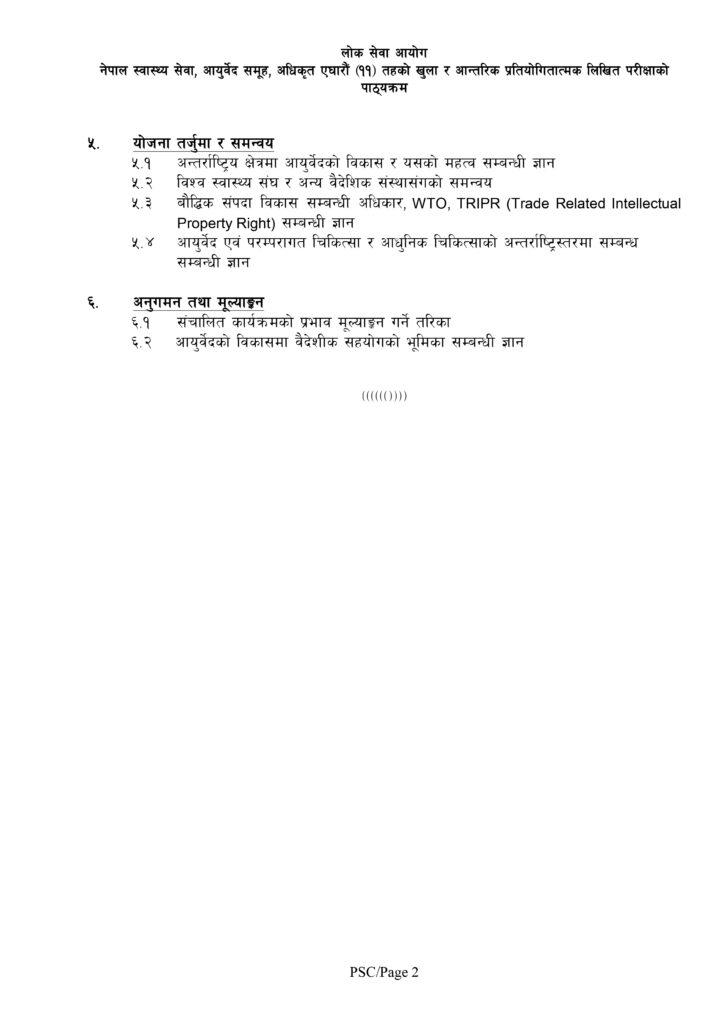
Second Paper Syllabus Details : Clinical and Applied Ayurveda
The second paper focuses on the practical and clinical applications of Ayurvedic principles. It tests candidates’ knowledge of diagnostics, treatments, and management of various conditions through Ayurvedic methods.
1. Nidana Panchaka (Diagnostics in Ayurveda)
- Concept of roga (disease) and rogi (patient)
- Five Diagnostic Tools:
- Nidana (cause)
- Purvarupa (premonitory symptoms)
- Rupa (signs and symptoms)
- Upashaya (therapeutic test)
- Samprapti (pathogenesis)
- Importance of prakriti analysis in diagnosis
2. Kayachikitsa (General Medicine)
- Management of doshic imbalances
- Treatment principles for:
- Jwara (fever)
- Pandu (anemia)
- Amlapitta (acid reflux)
- Diabetes (Madhumeha)
- Skin disorders (Kushtha)
- Role of rasayana (rejuvenation therapy)
3. Shalya Tantra (Surgery)
- Basic surgical procedures in Ayurveda
- Ksharasutra therapy for anorectal disorders
- Agnikarma (thermal cautery) techniques
- Management of wounds and ulcers
4. Shalakya Tantra (ENT and Ophthalmology)
- Ayurvedic management of eye disorders (Timira, Abhishyanda)
- Nasal conditions (Pratishyaya, Nasarsha)
- Ear disorders and their treatments
5. Balroga (Pediatrics)
- Neonatal care and nutrition
- Management of common childhood diseases
- Swarnaprashana (gold therapy) for immunity
6. Stri Roga and Prasuti Tantra (Gynecology and Obstetrics)
- Management of menstrual disorders
- Ayurvedic antenatal and postnatal care
- Infertility treatments
7. Panchakarma (Detoxification Therapies)
- Five purification therapies: Vamana, Virechana, Basti, Nasya, and Raktamokshana
- Indications and contraindications
- Role in preventive and curative healthcare
8. Preventive and Social Medicine
- Dinacharya (daily regimen) and Ritucharya (seasonal regimen)
- Role of diet and lifestyle in disease prevention
- Ayurvedic perspective on mental health
Tips for Preparing the Ayurveda Exam
- Understand the Syllabus:
- Familiarize yourself with each topic in the syllabus and allocate study time accordingly.
- Study Standard Texts:
- Refer to classic Ayurvedic texts like Charaka Samhita, Sushruta Samhita, and Ashtanga Hridaya.
- Use modern resources to complement traditional knowledge.
- Focus on Clinical Application:
- Emphasize practical knowledge of therapies, diagnostics, and treatments.
- Revise Regularly:
- Create a revision schedule to reinforce key concepts.
- Practice Previous Papers:
- Solve past exam papers to familiarize yourself with question patterns.
- Attend Workshops:
- Participate in hands-on training for Panchakarma, marma therapy, and other clinical skills.
FAQs
1. What is the difficulty level of the General Ayurveda exam?
The exam is moderately challenging, requiring a deep understanding of Ayurveda concepts and their practical applications. Regular study and practical exposure can make it manageable.
2. Are Sanskrit terms essential for the exam?
Yes, Sanskrit terms are crucial for understanding classical texts and writing precise answers. Focus on memorizing key terms and their meanings.
3. How much weight is given to Panchakarma in the syllabus?
Panchakarma holds significant weight in both theoretical and practical aspects, as it is a cornerstone of Ayurvedic treatment.
4. Is modern medicine knowledge necessary for this exam?
Yes, basic modern medical concepts like anatomy, physiology, and pathology are integral to understanding and applying Ayurvedic principles effectively.
5. Can I prepare for this exam without coaching?
Yes, with dedication, standard resources, and consistent effort, self-study is sufficient for success.
Conclusion
The General Ayurveda syllabus for the Lok Sewa Aayog exam is comprehensive, blending ancient wisdom with modern medical science. With a clear understanding of the First and Second Papers, aspirants can strategically prepare to excel in the examination. Focus on the core concepts, regularly revise, and engage with practical applications to enhance your confidence.
Prepare diligently, and you can secure a prestigious position in the Ayurveda field.
